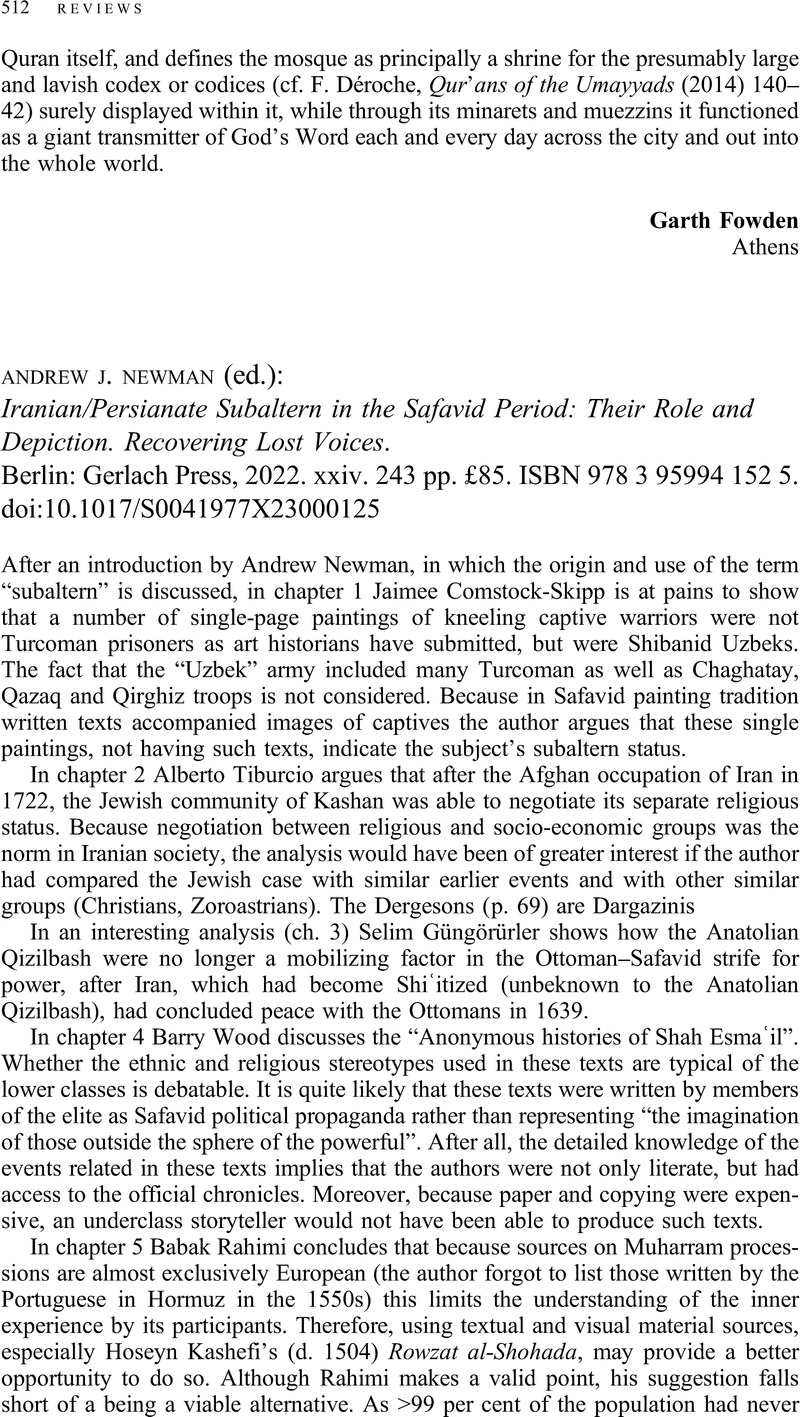No CrossRef data available.
Article contents
ANDREW J. NEWMAN (ed.): Iranian/Persianate Subaltern in the Safavid Period: Their Role and Depiction. Recovering Lost Voices. Berlin: Gerlach Press, 2022. xxiv. 243 pp. £85. ISBN 978 3 95994 152 5.
Review products
ANDREW J. NEWMAN (ed.): Iranian/Persianate Subaltern in the Safavid Period: Their Role and Depiction. Recovering Lost Voices. Berlin: Gerlach Press, 2022. xxiv. 243 pp. £85. ISBN 978 3 95994 152 5.
Published online by Cambridge University Press: 27 March 2023
Abstract
An abstract is not available for this content so a preview has been provided. Please use the Get access link above for information on how to access this content.

- Type
- Reviews: The Near and Middle East
- Information
- Copyright
- Copyright © The Author(s), 2023. Published by Cambridge University Press on behalf of SOAS University of London



